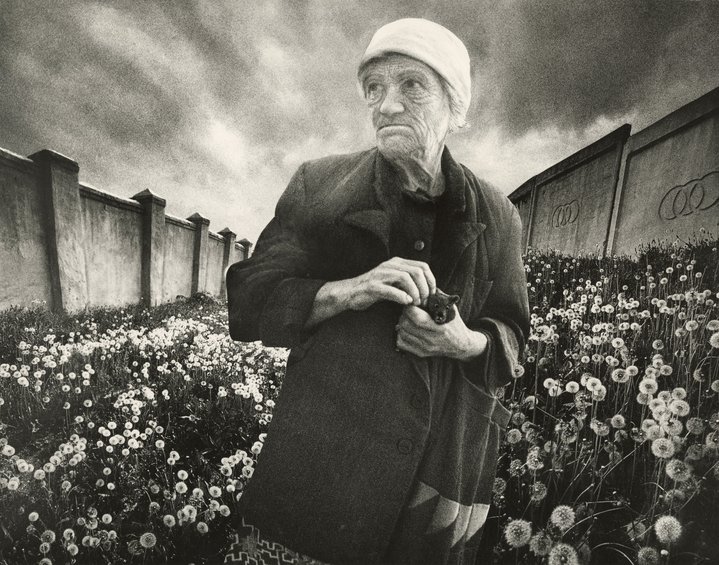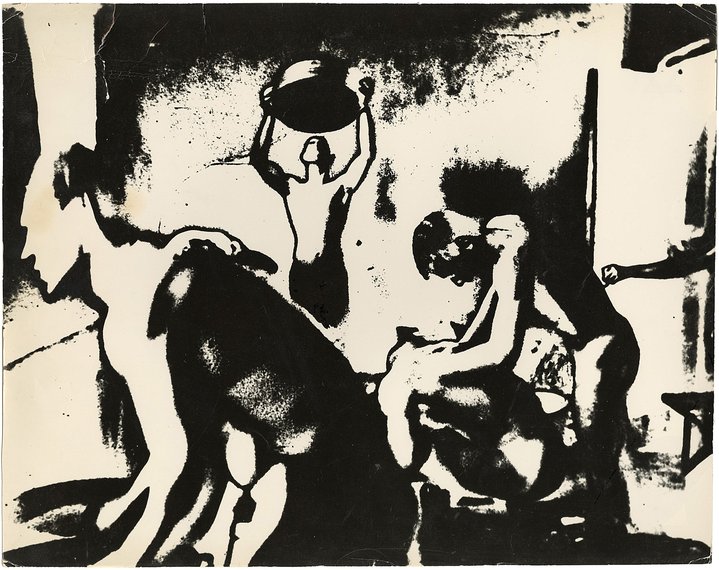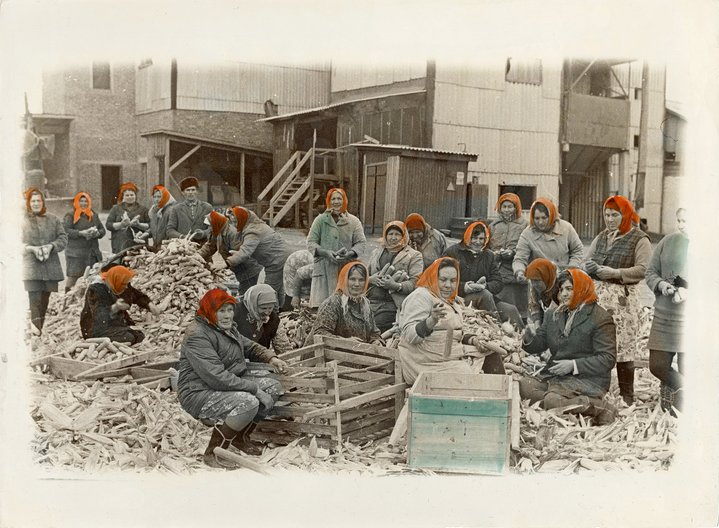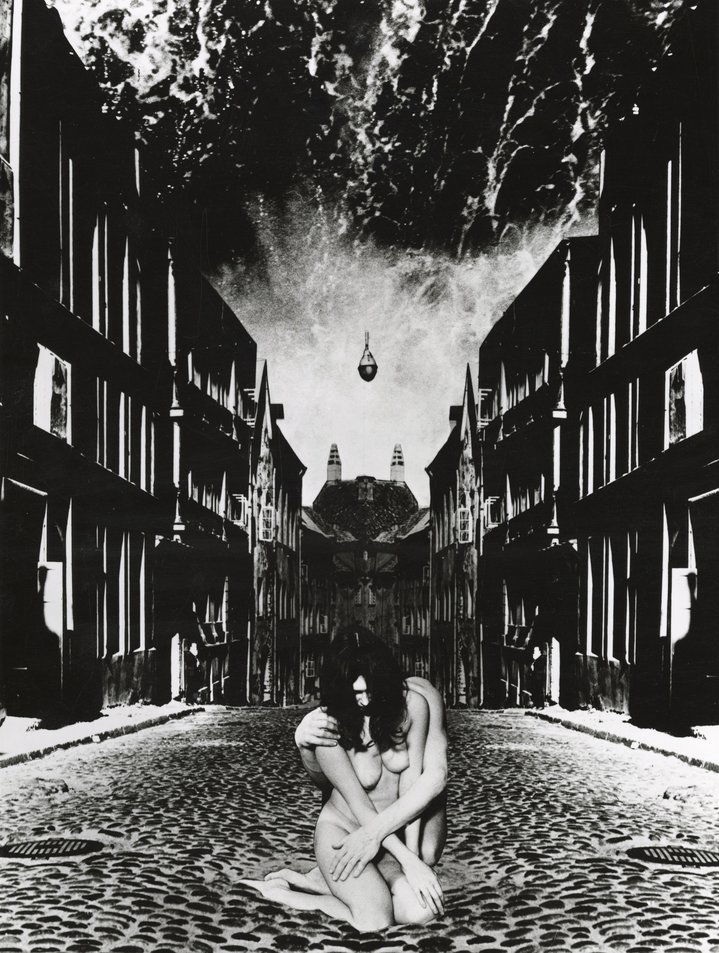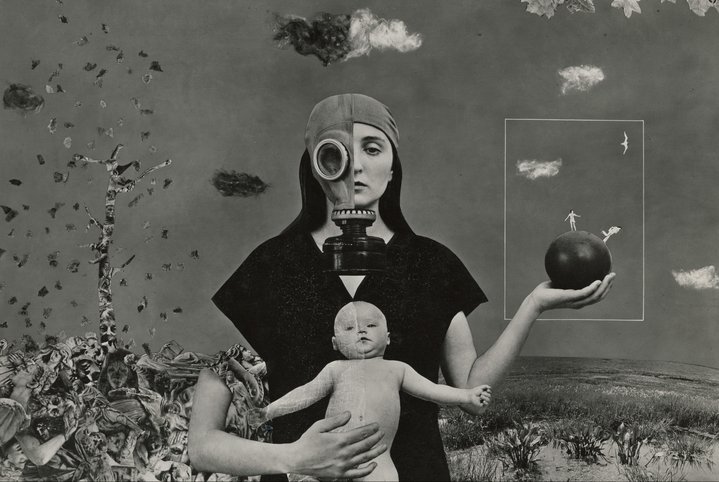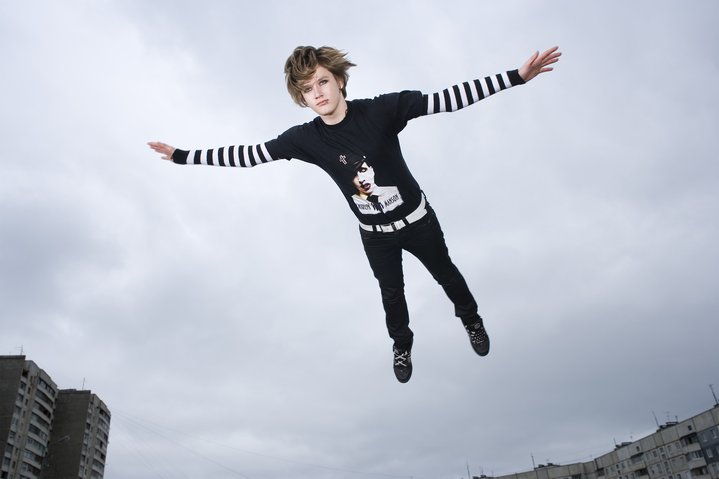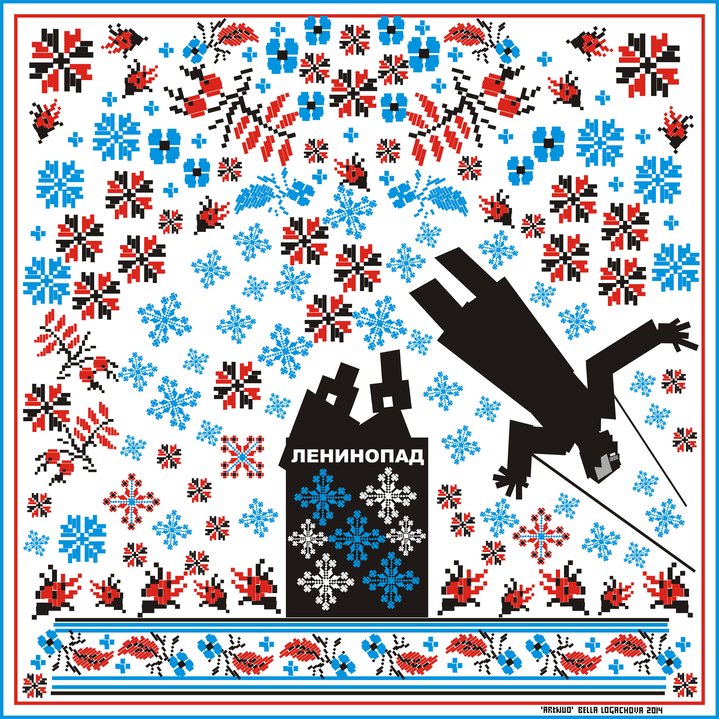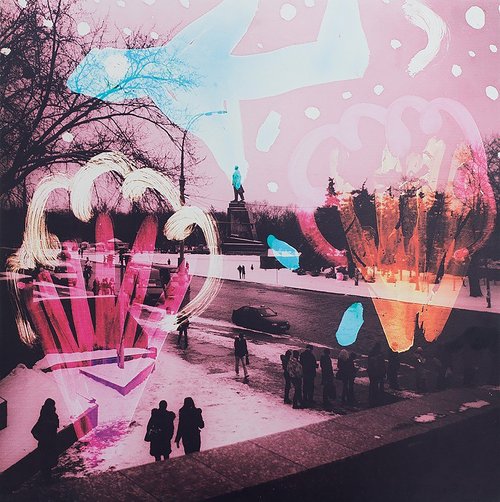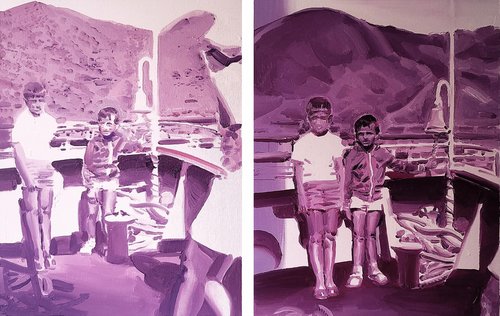Ukrainian Dreamers and Mikhailovean Poetics in Berlin

Boris Mikhailov. From ‘Yesterday’s Sandwich’ series, late 1960s–1970s. Courtesy of Boris Mikhailov, VG Bild-Kunst, Bonn, 2024
‘Ukrainian Dreamers: Kharkiv School of Photography’ currently on show at Galerie Kommunale in Berlin is an exploration of hope, irony and mortality featuring iconic works by Boris Mikhailov and Sergey Bratkov alongside a cornucopia of emerging and lesser known talents.
Galerie Kommunale, a not-for-profit venue in the heart of Berlin, is currently showing a representative exhibition spanning over half a century and covering all major generations of the renowned photographic and artistic phenomenon that is commonly known as the Kharkiv School of Photography. Not that it was ever an actual school or a singular collective. From its inception, the Kharkiv School was a very loose mix of people who knew one another, worked in the same period and were familiar with their contemporaries’ work. Sometimes they came together and formed artistic groups. Always, they sought methods of expression that were outside the conventional. Around 1971, Boris Mikhailov (b. 1938) and his colleagues from the Vremya Group formulated the notion of “a blow against all the accepted meanings and formalities of the time”. Later, Misha Pedan (b. 1957) put it like this: “...if there is one thing that the Kharkiv School has in common, it is a sense of the absurdity of the world around us and an ironic attitude about it. It was present in almost everyone. That is what unites the Vremya Group with the Gosprom Group and even with the younger generation Shilo Group.”
This current exhibition is curated by Sergiy Lebedynskyy and co-curated by Oleksandra Osadcha. In 2018 Lebedynskyy launched the Museum of the Kharkiv School of Photography (MOKSOP) which now reportedly holds more than 5,000 works and over 70,000 negatives. Existing as a nomadic institution, it has contributed significantly through its preservation work, cataloguing and promoting Ukrainian photography. Following the Russian attack on Ukraine in 2022, the collection, two tons in all, was moved to Wolfsburg in Germany, where it was stored in the vaults of a local art museum.
It is always interesting to view works by those who once were colleagues hanging on the same wall. Oleg Maliovany’s (b. 1945) multiple exposition collage from his ‘Double Sunsets’ series created in the 1980s is shown on the same wall with the ‘Civil Defence’ (1968), an early work from the renowned ‘Yesterday’s Sandwich’ series by Mikhailov. Nearby are collages by Evgeniy Pavlov (b. 1949) dating from the 1980s and 1990s, constructed from dozens of source images, one of which is reproduced on the exhibition poster. Layered three-dimensional collages by Olexandr Suprun (b. 1945) like ‘Spring in Forest’.
Sergey (Sergiy) Bratkov’s (b. 1960) installation ‘Quitting Smoking’ (1995–2022) is also on display. Produced for a show at Berlin’s Volker Diehl Gallery, it was also shown in the Kaleidoscope of (Hi)stories, the major Ukrainian art exhibition at the Albertinum in Dresden last year. Roman Pyatkovka (b. 1955), active since the mid-1980s, displays his playful erotic juxtapositions, showcasing both the free spirit of late Soviet era internal immigration and the characteristic and recognizable backdrop of the flats where people lived.
Shilo Group (Vladyslav Krasnoshchok and Sergiy Lebedynskyy) is represented by the same project, ‘Fruit of Wrath’, that was shown at the Haus am Lützowplats (March 2023). The artists’ conceptual black and white documentary charts the consequences of the Russian offensive in Ukraine. The SOSka Group, comprising Mykola Ridnyi, Serhiy Popov, and Hanna Kriventsova, has been active off and on since the noughties. Ridnyi (b. 1985) currently works in multi media and in particular installation. The group’s series ‘Dreamers’ (2008), displayed at the entrance, also provides the title for the current show.
Other featured artists include Viktor Kochetov (1947-2021), Sergiy Kochetov (b. 1972), a former member of SOSka Bella Logachova (b. 1973), Andriy Rachinskiy (b. 1990) and Daniil Revkovskiy (b. 1993). They represent the latest and newest additions to the Kharkiv School story.
The show includes a set of corresponding documents and artefacts, such as a well-known self-portrait of the Gosprom Group (1984–86) featuring Misha Pedan, Igor Manko, Boris Redko, Vladimir Starko, Leonid Pesin and Sergey Bratkov.
In its first iteration, ‘Ukrainian Dreamers’ was curated by Lebedynskyy in Kunstmuseum Wolfsburg in October 2023. At Galerie Kommunale, while seemingly a repeat, it is actually composed of different works. Far from being your normal retrospective, this Berlin exhibition comes with a twist. It has been augmented by two enormous displays by Boris and Vita Mikhailov. Harking back to a technique he pioneered in the 1960s, the ‘Temptation of Death’ (2014–2019), is a 10-minute slide projection consisting of a series of paired images, the left opposed to the right, one side featuring something dead (though not always literally). This work was first shown in Mikhailov’s major retrospective at Berlin’s C/O museum in 2019. Since February 24th, 2022, however, it has become more grim. One part focuses on the Kyiv Crematorium and its Wall of Remembrance dating to the late 1960s which was conceived as a memorial to the victims of wars by artists Ada Rybachuk (1931–2010) and Volodymyr Melnychenko (1932–2023).
Boris Mikhailov explains how the ‘Temptation of Death’ series started with “photographs of death in Venice taken in April 2014 during a trip to a writers’ conference where I was a guest. This was against the background of news on the television about the events happening in Ukraine and my fears and anxieties related to them; and against the background of real Venetian funerals, which referred to the journey of Charon, who transports the souls of the deceased to the underground kingdom of the dead”. The series evolved with many new shootings as well as existent photos from the last years being added and found its completion only after arrival in Kyiv in the Autumn of 2018, after visiting the Crematorium.
The other series is being shown in public for the first time, called ‘Responsibility of the Landscape, or Everybody Is Responsible for Own Face after Forty’. It consists of photographs taken at the beginning of the 1980s, not long before his famous ‘Series of Four’ (1982/83). As Boris Mikhailov puts it in a recording by his wife Vita Mikhailov: “This was my transition to conceptual photography, a transition to a kind of documentary form, where I removed everything unnecessary or worn out, and it was my first serious approach to text. They depict places where there seems to be nothing of any interest, places where it was not recommended to take photographs and not only officially, but I also did not allow myself to take photos there either”. This marked the beginning of Mikhailovean poetics of ‘grey’ nothingness. It was so grey it could not even be assembled as a project but today it is a thrilling feeling to see it exhibited after all these years. To the left of the display, the viewer can see a large-scale, distorted picture of the 1993 Kharkiv Stalin Highrise, which marks the end of an epoch.
The addition of these two series by Mikhailov in the exhibition makes for a serious change in accent. Yet, along with the works and series by the other artists on display, they are intended to contribute to a narrative bracketed with hope (SOSka’s ‘Dreamers’ at the entrance) and death (Shilo’s project in the back). With, of course, a myriad of variations inbetween.
Ukrainian Dreamers. Kharkiv School of Photography
Berlin, Germany
March 6 – June 2, 2024






